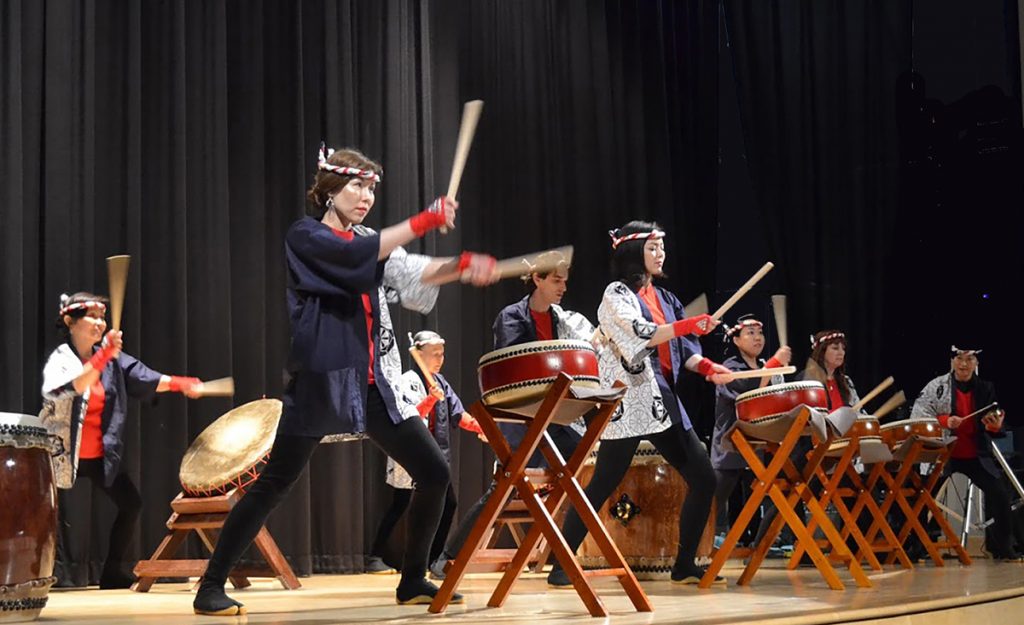Experience the sounds of the Shibuki Taiko Drum Group
Hailing from the Buffalo/Niagara region, the Shibuki Taiko Drum Group was founded by Kenji Furutate in 2016 as part of the Japanese Group of Buffalo. The troupe will bring their own taste of Asia to the Tower Fine Arts Center at The College at Brockport for a concert on Friday, February 8, at 7:30 p.m. Tickets are $17 general, $12 for senior citizens, Brockport alumni, faculty and staff, $9 for students, and are available online now at http://fineartstix.brockport.edu. The Tower Box Office will reopen on Monday, January 28, when tickets will be able to be purchased by phone at 395-2787, or in person at 180 Holley Street, Brockport.
Taiko drums can trace their roots to the 6th century, and have been utilized in various manners, including communication, military action, theatrical accompaniment, and religious ceremonies. Michael Wells, president of Tamashii Taiko Drummers of New Zealand, explains that “First and foremost, it’s important to understand that although taiko drumming is a form of music, it’s probably unlike any other kind of music in the world. In many taiko styles, movement is just as important as rhythm. Taiko movements also tend to be hard and fast, and generally very tiring. This means that to perform taiko well, you will want to be in good shape and develop speed and endurance – much like martial art training.”
Japanese culture is so steeped in tradition and ceremony that it is surprising that even though the drums have been in use for centuries, the formation of taiko drumming troupes making music for music’s sake is a relatively recent phenomenon. Even in Japan, the first “kumi-daiko” groups (ensembles with various sizes of taiko drums) were formed only approximately 70 years ago. According to Takata Takeshi, a Japanese music journalist, “North American taiko performance date back only to the late 1960s, when it was started by Japanese-Americans on the West Coast. The dates are significant: Ever since World War II, Japanese-Americans had been forced to keep a low profile. Things that were too obviously Japanese were bad, and so the first generation of immigrants were unable to express the traditional customs and arts that they had brought with them in any visible way. The civil rights movement of the 60s changed that. The Japanese began to reexamine their culture, and the taiko became a symbol of their new-found pride.”
Munenori Higashi, president of the Taiko Center in Kyoto, feels that taiko is “becoming a universal musical language, helping people around the world get closer. The instrument has an unlimited potential, as the fact that the kumi-daiko style was invented and developed in relatively short period shows. Traditional, but new: that is taiko.”
Provided information



